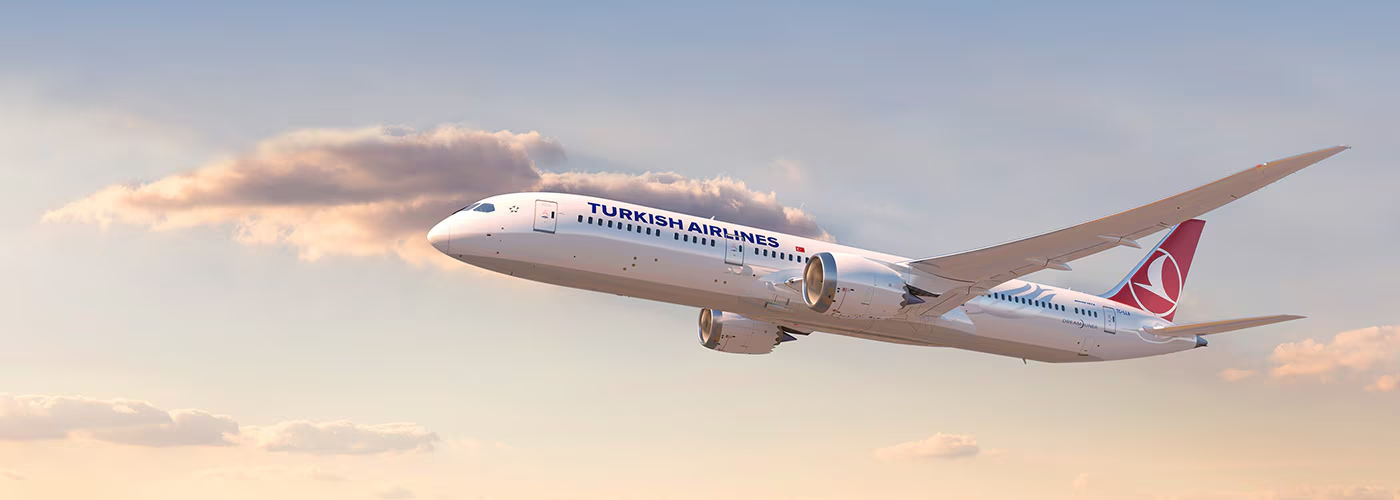Why Are the Wings of the Boeing 787 Dreamliner Curved?
The Boeing 787 Dreamliner is a marvel of modern engineering, known for its sleek design, advanced technology, and unparalleled flying experience. But among all its features, one that stands out the most is its unique wing design.

The gentle curve of its wings is not just a cosmetic touch but a result of years of research and testing aimed at improving the aircraft’s performance and passenger comfort. This feature makes the Dreamliner truly one of a kind. This article will delve deeper into the science behind its curved wings and understand how it contributes to the plane’s exceptional performance.
The Aerodynamics of Curved Wings of the Boeing 787 Dreamliner
The idea behind the curved wing design is rooted in the principles of aerodynamics. A wing’s primary function is to generate lift, which allows the plane to fly. But lift alone is not enough. An aircraft also needs to overcome drag, which is the force that opposes the airplane’s motion through the air.

To achieve optimal performance, engineers must strike a balance between lift and drag. The curved shape of the Dreamliner’s wings allows for smoother airflow over the surface, reducing turbulence and drag. This results in a more efficient flight, lower fuel consumption, and a longer range.
Increased Passenger Comfort
But the benefits of the curved wings do not stop there. The smooth airflow also leads to a more comfortable flight for passengers. The reduction in turbulence and drag results in less noise and vibration in the cabin, making for a more pleasant journey. This is a significant advantage for long-haul flights, where passenger comfort is of the utmost importance. The Boeing 787 also has a pressurization system that allows the cabin to be pressurized to a lower altitude simulating 6000ft rather than 8000ft. This allows a more comfortable journey reducing jetlag and fatigue.
The Versatility of Curved Wings
Another benefit of curved wings is their versatility. Traditional straight-winged planes are optimized for either high-speed or low-speed flight, but the Dreamliner’s wings are designed to perform well across a range of speeds. This makes it a more versatile aircraft, capable of handling a more comprehensive range of flight conditions and environments. This versatility also allows the 787 to be used in challenging environments such as hot and high airports like La Paz, Bolivia, or Kathmandu, Nepal, where it’s hard for other aircraft to operate.
READ ALSO:
Advance Composite Materials in the Boeing 787 Dreamliner

The wings of the 787 are flexible due to the use of composite materials such as CFRP or carbon fiber-reinforced polymer (CFRP). Boeing claims that this composite material makes up approximately 50% of the wings on the Dreamliner. Wings are more flexible, resulting in a smoother ride and lighter, resulting in less fuel burn and greater efficiency, according to Boeing.
In conclusion, the curved wing design of the Boeing 787 Dreamliner is a masterstroke of engineering. It’s a perfect blend of form and function where aesthetics meet science. Its unique design improves fuel efficiency and passenger comfort and makes it a more versatile and capable aircraft. The Dreamliner is a testament to the innovation and creativity of the aviation industry and a glimpse into the future of air travel.
Read also:
As we look up to the sky, we can’t help but marvel at the sight of the 787 Dreamliner, soaring gracefully with its curved wings, a symbol of human achievement and the unending possibilities of technology.
Sources:
- Featured Image: Shoval Zonnis
- Simple Flying
Youssef Yahya is the CEO and Founder of Aviation for Aviators, a platform dedicated to the aviation industry. With over 3 years of experience as an aviation writer, Youssef is passionate about sharing his insights on aviation, entrepreneurship, and the broader business landscape. As a Teaching Assistant in Entrepreneurship at Nile University, he also nurtures the next generation of entrepreneurs. When he’s not exploring the skies or business ventures, you can find him saying, ‘Drag your coffee, and let’s talk aviation, entrepreneurship, and football.’
You might also like:
- SUSI AIR: REACHING THE UNREACHABLE
- FAA Orders Inspections for Boeing 767 Landing Gear Amid Safety Concerns
- Alaska Airlines to Acquire Hawaiian Airlines for $1.9 Billion
- French MPA Contest Heats Up: Airbus vs Dassault in Race to Revolutionize French Naval Power
- What to Expect During Your First Flight
Discover more from Aviation for Aviators
Subscribe to get the latest posts sent to your email.














2 comments